Of racing students and genetic circuits
Programmable cells that can detect cancer, canyons on Mars that may have been formed by lava, and black holes catapulted out of the centre of a galaxy: ETH researchers made a name for themselves in 2014 with some outstanding scientific achievements and exciting hypotheses. It was also a politically charged year for all Swiss research institutions. As the year draws to a close, the ETH News editorial team looks back on some of the most memorable moments.
January
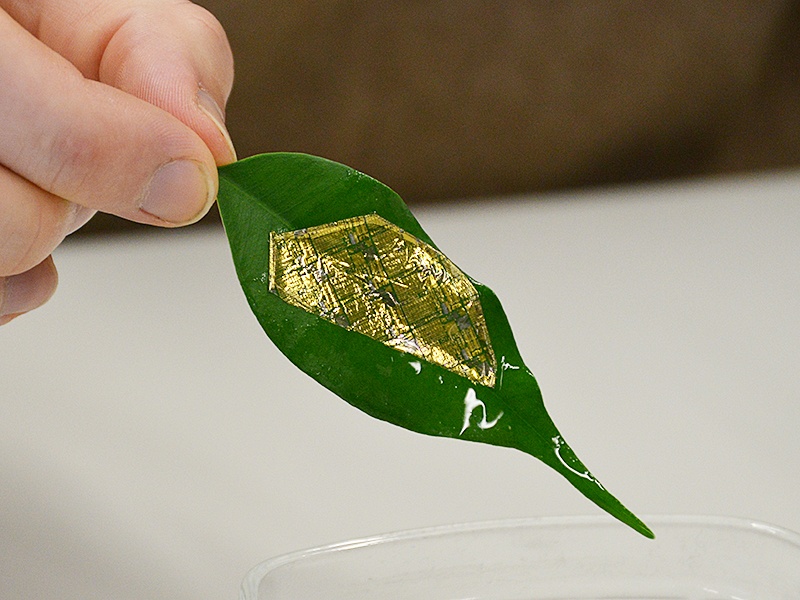
January got off to an explosive start with a look at the physics behind super volcanoes and the build-up to the 100th anniversary of the Swiss Seismological Service (SED). ETH researchers developed ultra-thin electronics for sensors that are quite literally easy on the eye. Other scientists analysed data from sensors on trams to measure the air quality in Zurich. With their spin-off, two Master’s students made life easier for people eternally searching for jeans that fit, and literature lovers were pleased by the publication of Max Frisch’s secret Berlin Diary. There was also good news for commuters: scientists at ETH developed a method for predicting delays caused by rail disruptions. Four ETH researchers were delighted to have their applications for a coveted ERC Consolidator Grant approved.
February

In February, ETH was right in the thick of the action at the Winter Olympics in Sochi thanks to the Citius bobsleigh (co-developed at ETH) and the students representing Switzerland in various categories, including snowboard slopestyle. Meanwhile, ETH researchers back home proved themselves to be talented criminologists: they investigated how dioxin poisoning leads to chloracne and solved the mystery of what happened in a mountain accident on the Aletsch Glacier 88 years ago. Others researched virtual rooms and sensors that can help during violin practice. The vote in favour of the Swiss initiative against mass migration on 9 February led to problems for scientists and students at Swiss institutions, as it meant researchers would no longer be eligible for EU funding.
March
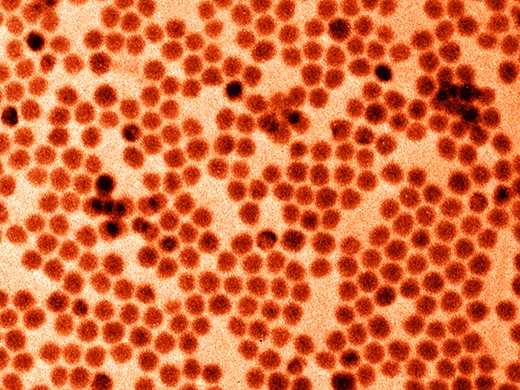
The Institute for Theoretical Studies (ETH-ITS) commenced operations in March 2014 and welcomed its first guest scientist: Terry Hwa, a physics professor from the University of California, San Diego. ETH-ITS is hosting five researchers for one year. Before spring blossomed into season, ETH researchers presented the first genetically modified apple trees, which are resistant against fire blight, the dreaded plant disease. Other scientists managed to produce uniform antinomy nanocrystals for the first time. These could one day be used in the electrodes of batteries to improve their performance. Meanwhile, the Swiss National Supercomputing Centre (CSCS) in Lugano made its supercomputer Piz Daint available for research projects. And Professor of Electrochemical Materials Jennifer Rupp and her team won the ETH Spark Award for their work on optimising new types of computer storage media (RRAM).
April
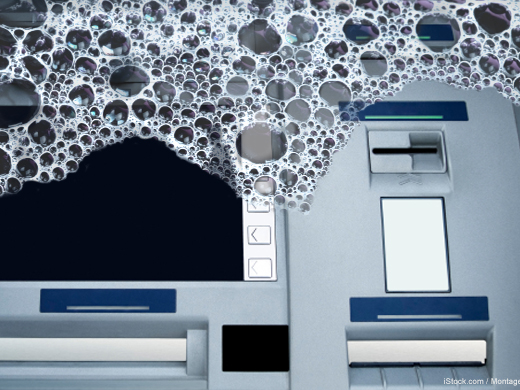
In April, an international project led by ETH Zurich achieved an important milestone. New, cost-effective sensors in cars are intended to assist the development of driverless parking. Another international project also took a major step forward: the production of fuel from water and CO2 with the help of solar energy. The core of the project is a solar reactor developed at ETH Zurich. The presidents of the ten universities of the International Alliance of Research Universities (IARU) addressed key issues such as sustainability during their annual meeting at ETH Zurich. They consolidated their Sustainable Campus Initiative, with a conference being scheduled to take place at ETH in October. ETH scientists presented a membrane made from the “super material” graphene. It is as thin as is technologically possible. Researchers also demonstrated how to prevent olive oil from being counterfeited and cash machines from being broken into. Both solutions were based on natural processes.
Mai
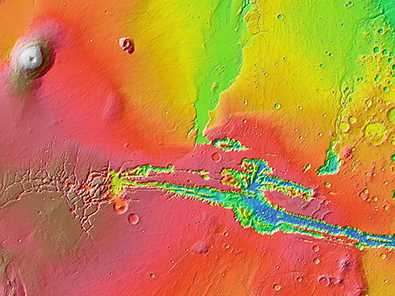
May was all about exchanges. Singaporean President Tony Tan and his entourage visited the ETH Hönggerberg campus, while ETH Zurich paid a visit to the Big Apple, where it presented examples of Swiss ingenuity alongside some major players as part of the Zürich meets New York festival. Back home, ETH Zurich welcomed the arrival of an inventive mind for the Richard R. Ernst Lecture: Kâmil Uğurbil, one of the heads of the Human Connectome Project, who spoke about brain mapping and the marriage between neuroscience and physics. The supercomputer Euler, which ETH Zurich inaugurated at the CSCS data centre in Lugano, delivered more power to drive research ever forward. Meanwhile, researchers from ETH Zurich, the EPFL and IBM reached the limits of magnetism. They created magnets the size of a single atom, which are as strong and stable as is physically possible. Phase contrast x-ray imaging enabled researchers at ETH Zurich, the Paul Scherrer Institute (PSI) and Kantonsspital Baden to perform mammographic imaging that allows greater precision in the assessment of breast cancer and its precursors. A bold hypothesis by an ETH earth scientist suggested that the massive canyons on the surface of Mars were caused by lava, not water. Last but not least, ETH researchers caused a stir with two molecules: they discovered a micro-RNA that is critical to the onset of diabetes in adults. And they also isolated a protein from a root fungus of the spruce, which could form the basis for vaccinating livestock and domestic animals against zooparasitic nematodes.
June
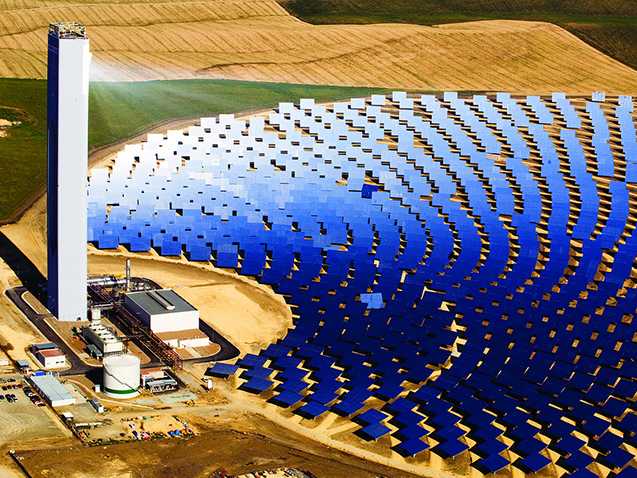
The Royal Society rarely elects two professors from the same university as fellows in the same year, which made it all the more pleasing when Simon Lilly and Timothy Eglinton from ETH Zurich followed in the footsteps of Isaac Newton at the beginning of June. Obesity researcher Christian Wolfrum also received recognition for his research in the field of metabolism by winning the prestigious Max-Rössler Prize and its CHF 200,000 prize money. A ground-breaking study on energy supply was also completed. The researchers concluded that solar-thermal power stations could reliably supply enough electricity to cover a substantial part of future demand. A Europe-wide consortium led by the Swiss Seismological Service (SED) and the Institute of Geophysics at ETH Zurich issued the first-ever harmonised map to show the risk of earthquakes in Europe and Turkey: the European Seismic Hazard Map 2013. ETH researchers also generated international media interest by discovering the cooling effect of unploughed fields. This phenomenon can reduce temperatures in heat waves by as much as 2°C. A group of ETH immunologists also attracted great attention after discovering a previously unknown mechanism that prevents the cells of the immune system from attacking one other. And ETH researchers discovered that an infection with malaria pathogens changes the scent of infected mice, making them much more attractive to malaria-transmitting mosquitoes.
July
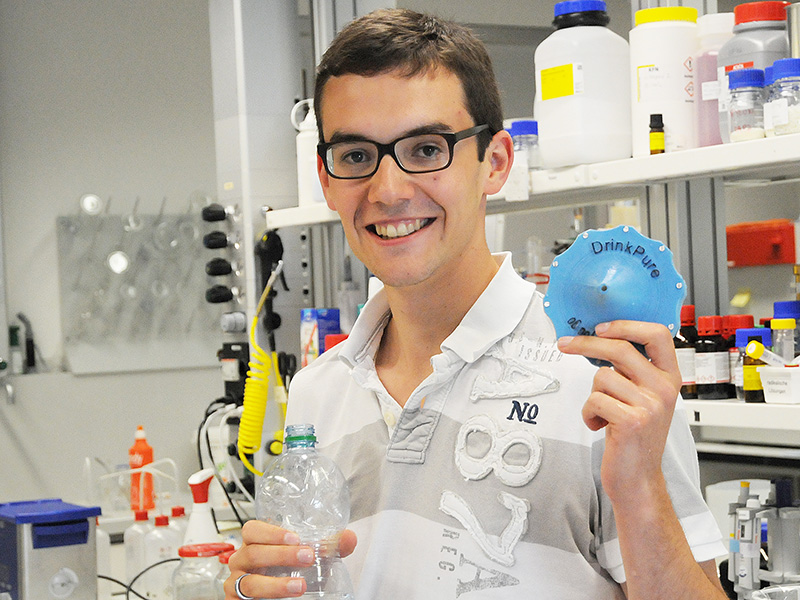
In July, ETH Rector and President-elect Lino Guzzella travelled to the US with a Swiss delegation led by Federal Councillor Doris Leuthard, where they nurtured relations with the renowned university MIT during their stay in Boston. The ETH Board confirmed the appointment of Sarah Springman, professor of Geotechnical Engineering, as future ETH Rector. She will help shape the future of ETH Zurich as part of the Executive Board from January 2015. Meanwhile, ETH researchers searched for patterns in the birth and death data of notable cultural figures. July also brought the knockout stages of the FIFA World Cup, which saw ETH researchers investigate the wisdom of the crowd in betting games. ETH and the University of Zurich also showed that more can be achieved together, with a new competence centre for personalised medicine. On the Hönggerberg campus, the House of Natural Resources began to take shape. It will serve both as an office building and an innovation lab for sustainable construction (see also blog). With the Zernez Energia 2020 project, ETH researchers not only envisaged a sustainable house, but an entire mountain village. A student also pursued a noble goal by developing a water filter to help provide clean drinking water for everyone in developing countries.
August
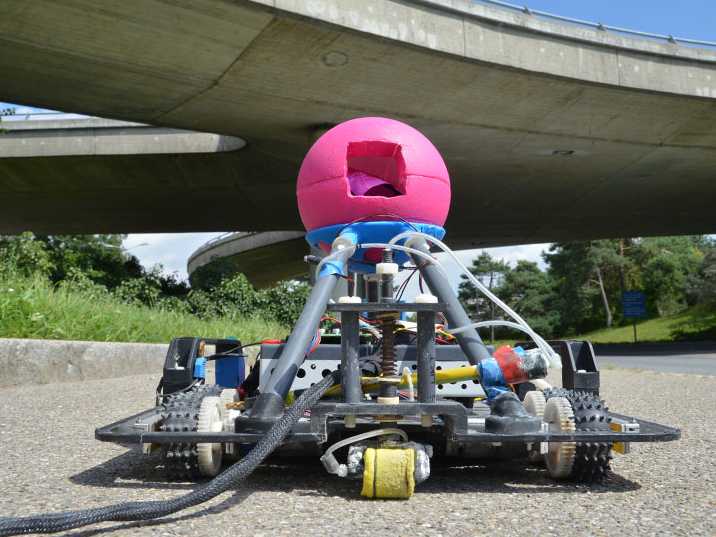
In August, researchers announced that they had managed to cure polyarthritis in mice for the first time – with a newly developed antibody drug. Another highlight was the development of an intelligent biological insulin pump in the form of a capsule. It contains two linked genetic circuits, one of which measures acid levels in the blood while the other produces insulin. Meanwhile, materials scientists at ETH Zurich developed a synthetic polymer that is almost as thin as graphene, and civil engineers designed a robot for examining reinforced steel structures. In future, the robot will be able to check whether the reinforcement steel in motorway bridges has started to corrode. Glaciologists celebrated the 100th anniversary of the glacial ice measurement programme on the Claridenfirn glacier in the canton of Glarus. The recorded data shows detailed seasonal changes in the ice. It also documents global warming, which has taken a break for the past 15 years. The exact reasons as to why global warming is likely to continue again over the coming years were explained by ETH scientists in a study published in August.
September
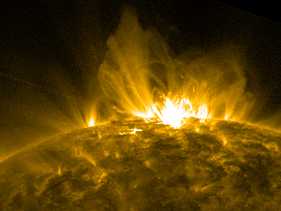
The Federal Council decided to reserve 70 hectares for the ETH-supported Dübendorf innovation park. ETH and the University of Zurich officially opened the EXCITE centre, which aims to consolidate expertise in the field of bio-imaging. The stricken Swiss research community enjoyed a brief respite in mid-September: Switzerland is once again partially involved in the European research programme Horizon 2020. This will last until the end of 2016. The chemist Detlef Günther joined the university’s Executive Board, becoming the new vice president research and corporate relations. September also saw several research-related developments. In a high-resolution simulation, earth scientists showed that mantle plumes in the Earth’s interior can cause continental breakup if the planet’s skin is already taut. In addition, biologists discovered that a known and, in evolutionary terms, extremely old defence mechanism in human, animal and plant cells also works against viruses. Researchers also studied the phenomenon of haloclasty in more detail. They can now use their findings to predict the weathering process of buildings more accurately. With a new analysis of land regions, ETH climate researchers challenged the general climate change precept that dry regions are becoming drier and wet regions are becoming wetter. In some regions, they encountered divergent trends. Physisist used a model to show the cause behind giant solar storms, thereby created the basis for future predictions. An ETH spin-off livened up the science scene with a short film about dancing lampshades to promote the Cirque du Soleil.
October

Like the Shanghai Ranking and QS Ranking, the THE ranking also confirmed ETH Zurich to be the best university in continental Europe and the 13th best worldwide. The bodies behind the rankings also warned against increasing Swiss isolation and its consequences. After four years of construction, ETH opened the first building from the 2003 master plan. Mechanical engineers and the KOF Swiss Economic Institute at ETH Zurich now share one of the most sustainable university buildings in Switzerland. ETH researchers were the talk of the industry with their gesture-controlled smartphone, a development that greatly expands the range of potential interactions with such devices. A research team led by ETH Zurich also explained how the flu virus uses the cell’s waste disposal system to release its genome. Meanwhile, bioengineers developed a programmable bio-computer in cells that could make it possible to detect and kill cancer cells.
November
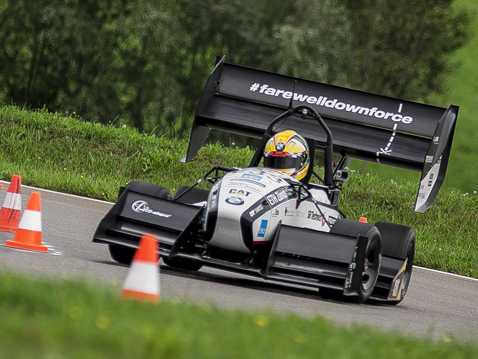
In November, ETH Zurich awarded its own research prizes: the Latsis Prize went to 33-year-old assistant professor Philipp Grohs for his achievements in the field of applied mathematics, while the Ruzicka Prize went to pharmacist Cristina Müller, who developed a method for irradiating cancer directly inside the body. On 3 November, students broke the world acceleration record for electric cars with the “Grimsel”. The vehicle accelerated from 0 to 100 km/h in 1.785 seconds over a distance of less than 30 metres. ETH astronomers discovered an object in outer space that may be a black hole catapulted out of a galaxy or a giant star exploding over a period of several decades. Either way, it is the first time that such an object has been observed. ETH physicists used shaken ultra-cold potassium atoms and a honeycomb lattice of laser beams to create a new class of materials first proposed in 1988. ETH biologists also developed a high-quality product: the first ever gene network to be operated via brain waves. It produces varying amounts of a desired molecule depending on the user’s thoughts. A new attraction was built on the ETH Hönggerberg campus: a dome made from beaten earth that serves as a meeting place and is intended to provide new findings about this natural construction material.
December
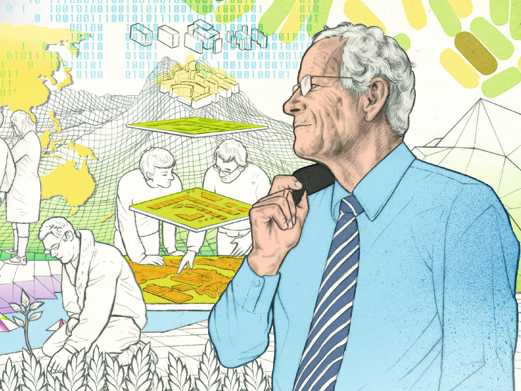
Ralph Eichler parted company with ETH and officially handed over the presidential baton to Rector Lino Guzzella at the Executive Board’s Christmas party. Guzzella in turn made way for Sarah Springman, while Detlef Günter took over the reins from Roland Siegwart as vice president research and corporate relations. But December was not just a month for farewells and transfers of office – it was also about generous donations. ETH and the University of Zurich founded a new translational research centre at the interface of medicine, science and engineering. The Wyss Translational Center Zurich (WTZ) was made possible thanks to a USD 120 million donation from Dr. h.c. mult. Hansjörg Wyss to the two Zurich universities. Around the same time, ETH Zurich established a new chair to study how physical activity affects human physiology and long-term well-being. The Wilhelm Schulthess Foundation is supporting the Chair of Physical Activity and Health with CHF 10 million over a ten-year period. The research groups of ETH professors Konrad Hungerbühler and Javier Pérez-Ramírez introduced a new process at the end of the year, with the scientists from the Institute for Chemical and Bioengineering developing a process for making lactic acid from a waste by-product of the fuel industry. This can then be used as a raw material for biodegradable plastic.
